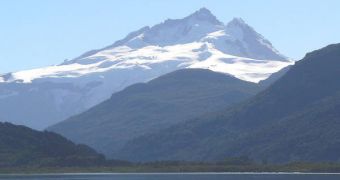According to new investigations, it would appear that the eastern part of the Andes, especially that in Colombia, is, in fact, much older than previously estimated. Newly collected data shows that the faults that started giving birth to the mountains in fact became active some 25 million years ago, rather than seven million years ago. The find is of great importance, the experts who have conducted the study say, because no such study has ever been undertaken in the region before. International experts from the Smithsonian Tropical Research Institute in Panama, the University of Potsdam in Germany, and Ecopetrol in Colombia have collaborated for the new research.
“No one had ever dated mountain-building events in the eastern range of the Colombian Andes. This eastern sector of America’s backbone turned out to be far more ancient here than in the central Andes, where the eastern ranges probably began to form only about 10 million years ago,” University of Texas postdoctoral fellow Mauricio Parra explained. He was a former doctoral candidate at the University of Potsdam, and is also the lead author of a new scientific paper detailing the finds, published in the April issue of the journal Geological Society of America Bulletin.
The team analyzed all aspects of mountain-forming processes, including the tectonic activity in the area, the amount of thrust in the faults, the origins and movements of sediments, and the location and age of plant pollen in the sediments. In addition, they also analyzed zircon-fission tracks, which provided them with a thorough description of basin and range formations in the area in the end. Geologists know that massive rains wash minerals like zirconium down mountain slopes and into adjacent basins, where they accumulate and form deposits. The analysis of these deposits usually hints at when the mountain was formed.
“The date that mountain building began is critical to those of us who want to understand the movement of ancient animals and plants across the landscape and to engineers looking for oil and gas. We are still trying to put together a big tectonic jigsaw puzzle to figure out how this part of the world formed,” STRI staff scientist Carlos Jaramillo added. The way the experts came to the actual age of the mountain range was through analyzing the natural decay of traces of uranium, which can be usually found in zircon crystals. After analyzing about 17,000 pollen grains, they arrived at the conclusion that the mountains were a lot older than anyone previously estimated.

 14 DAY TRIAL //
14 DAY TRIAL //